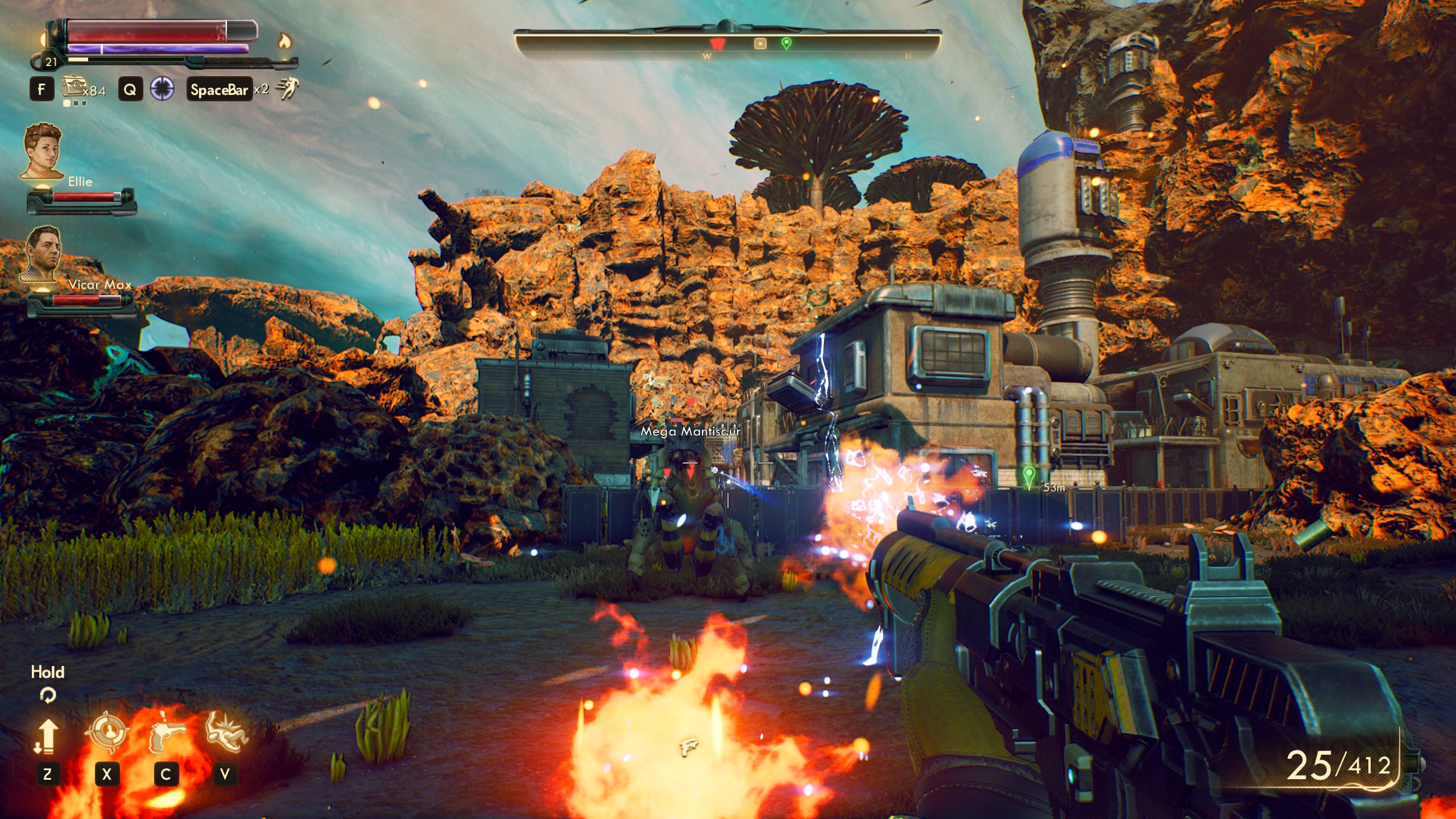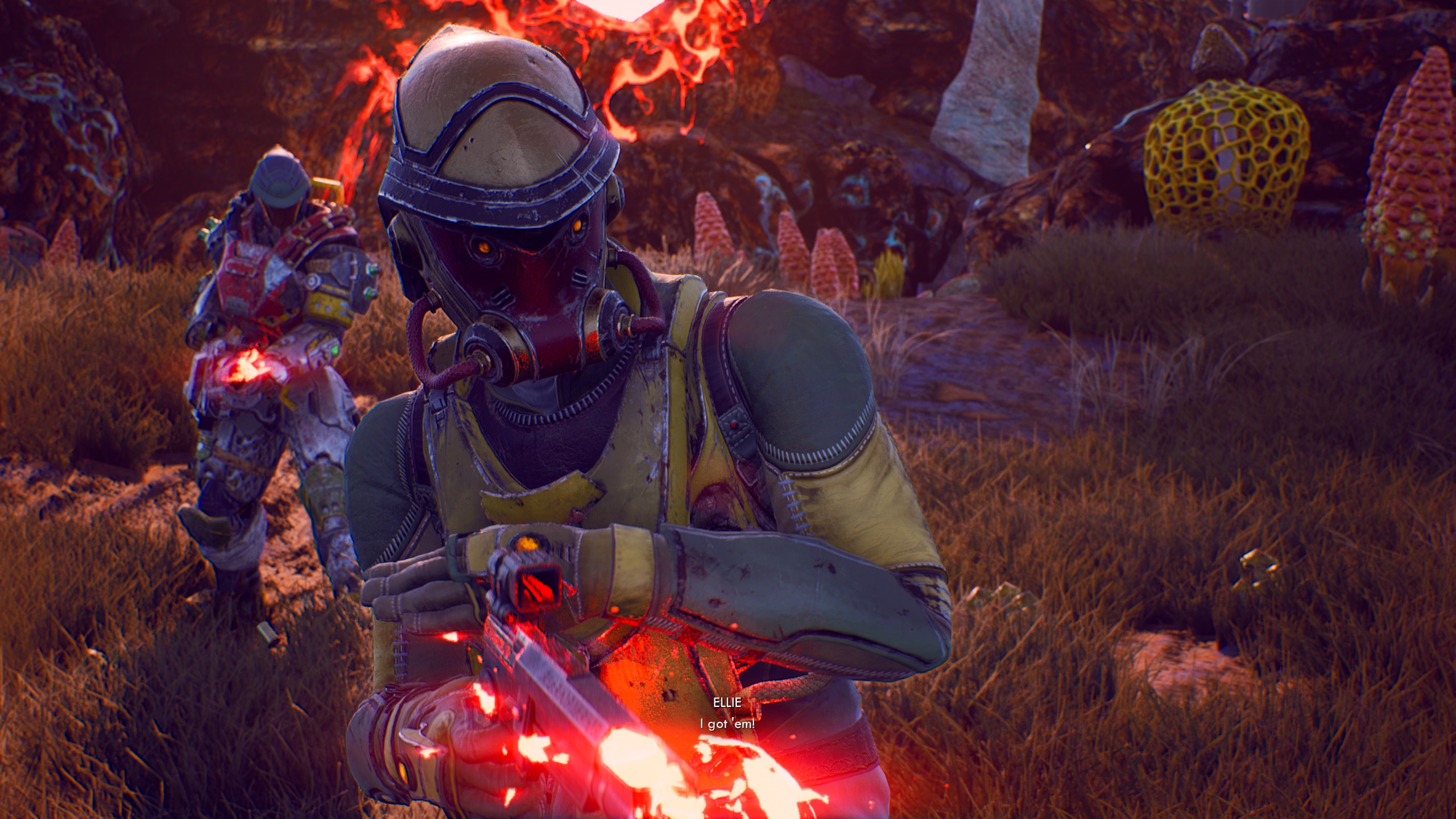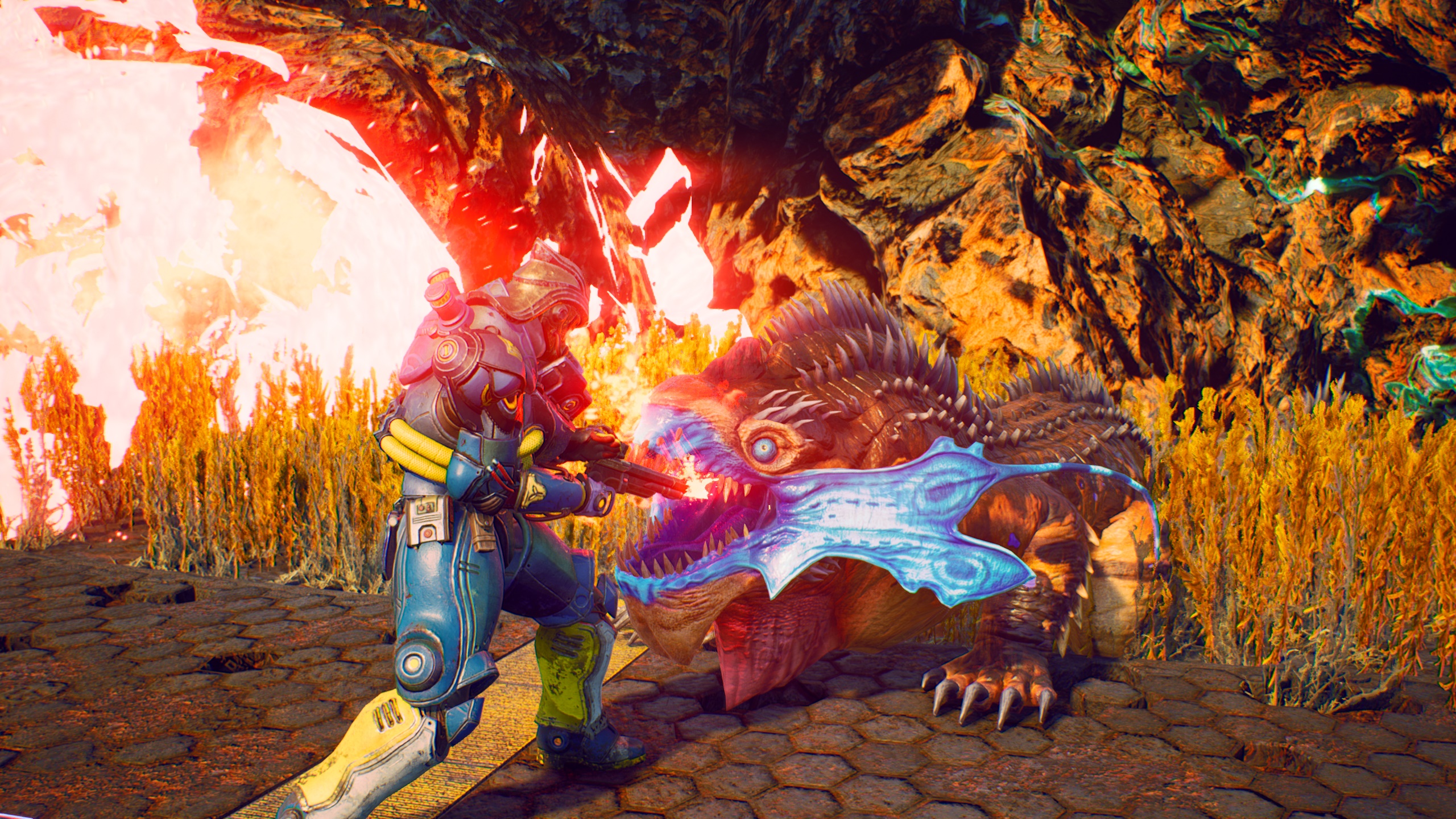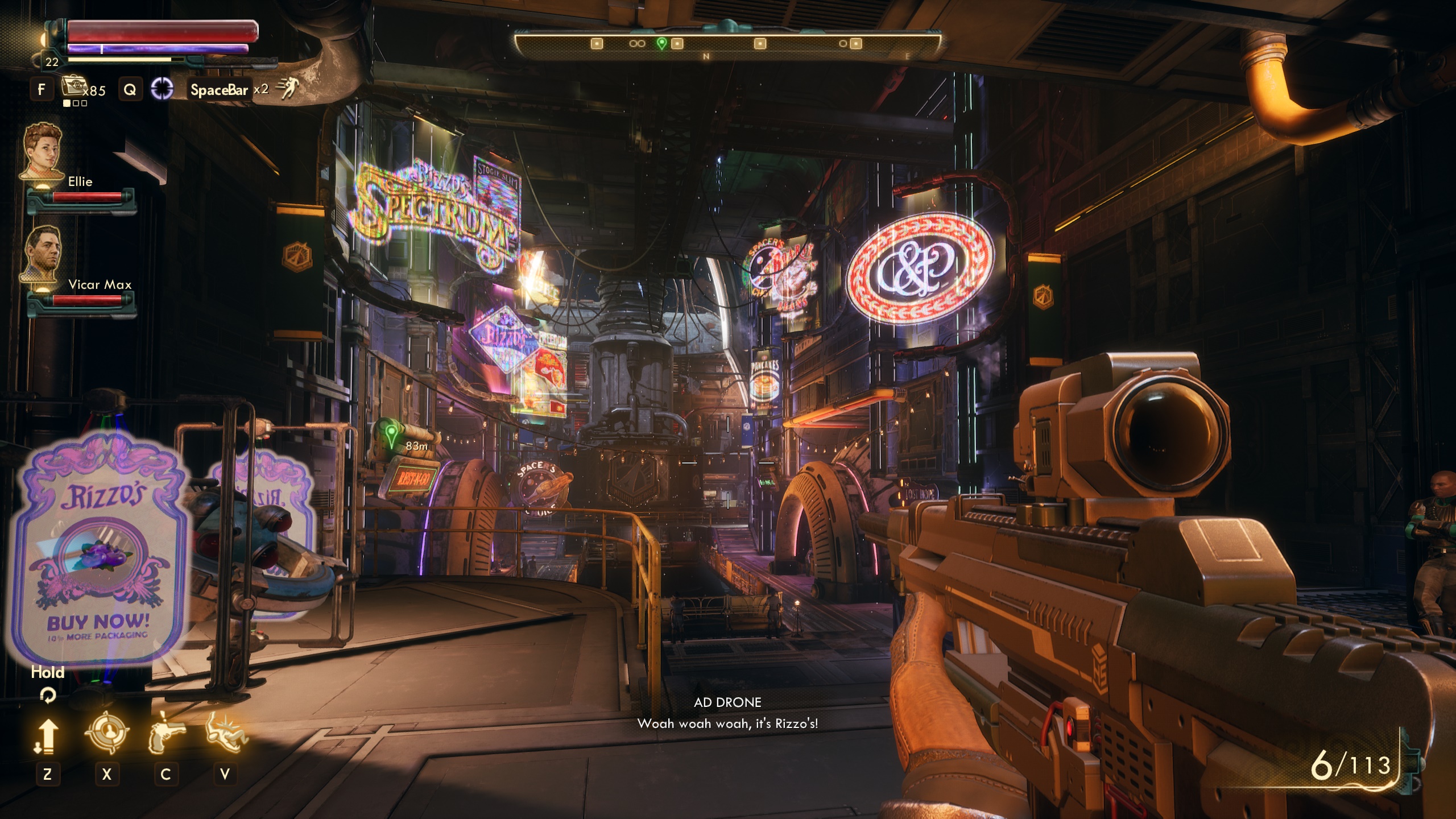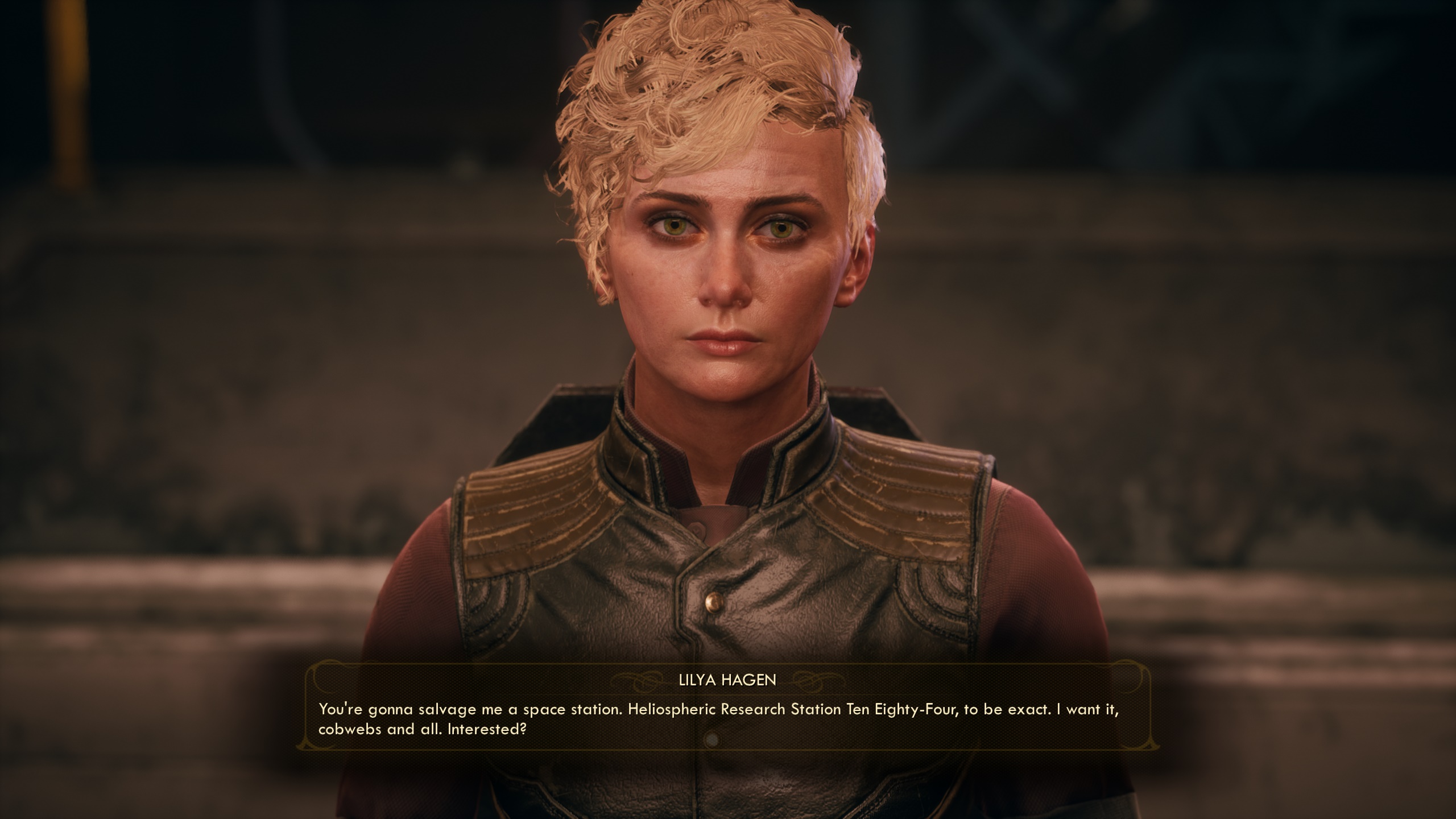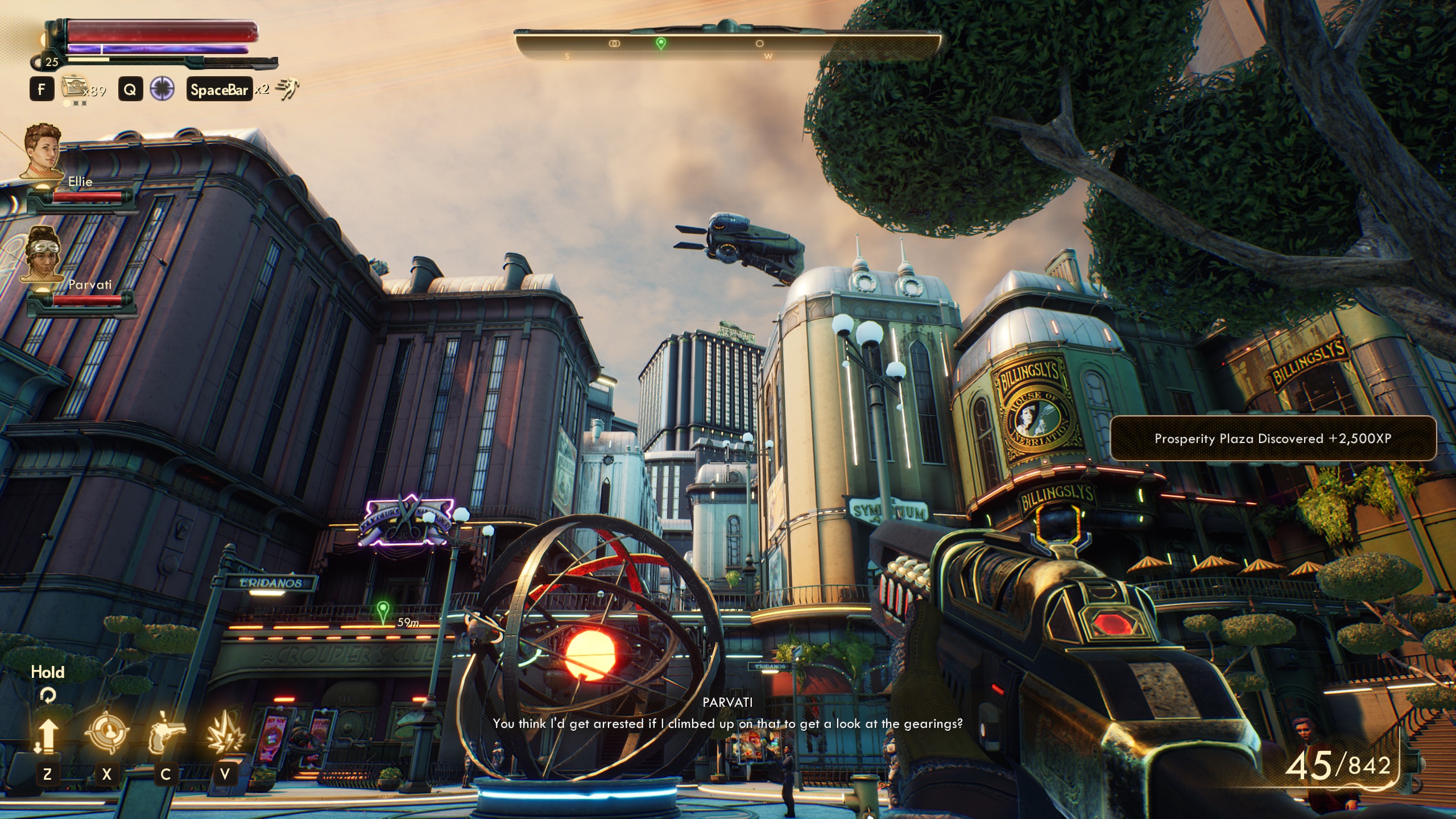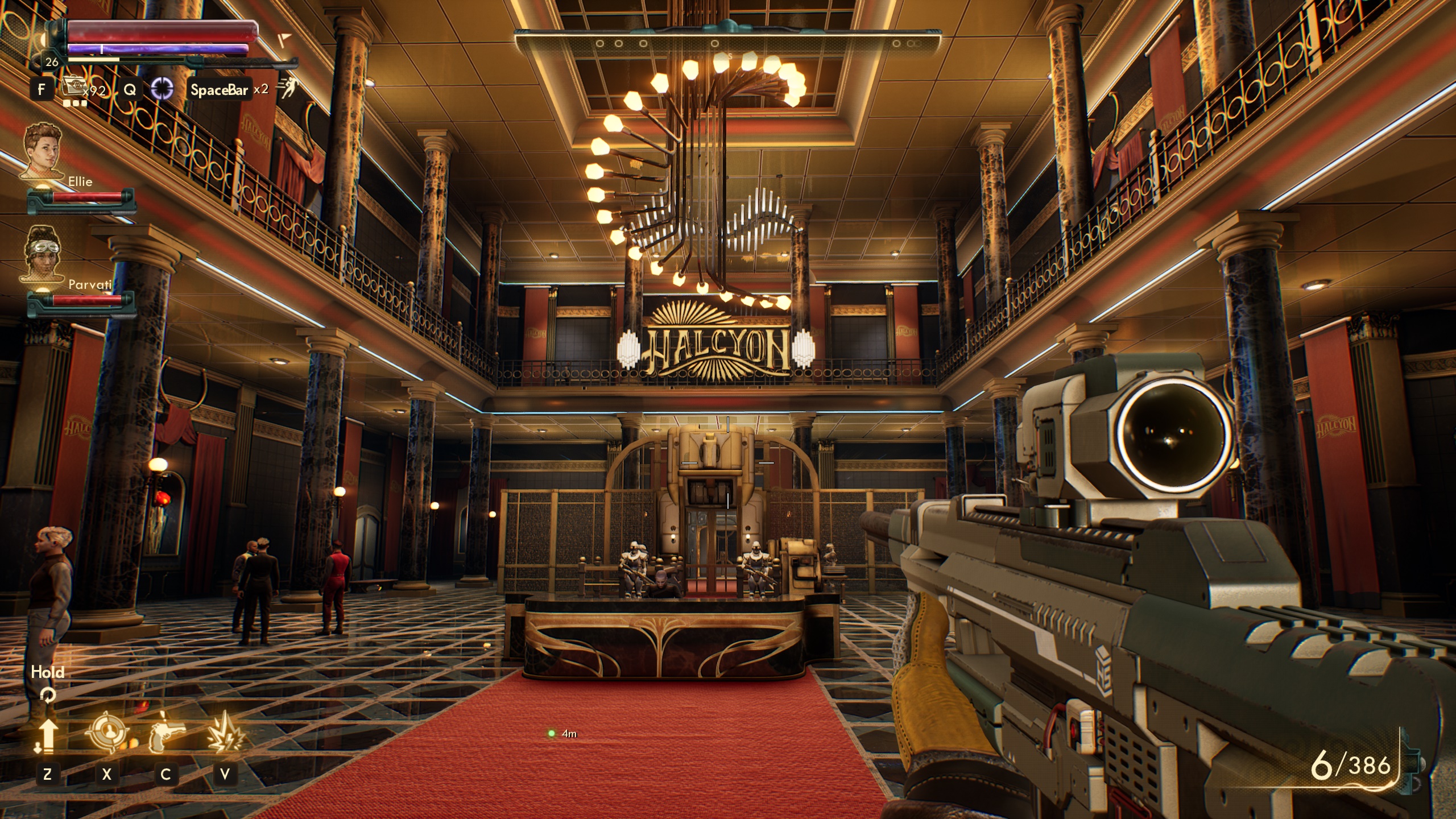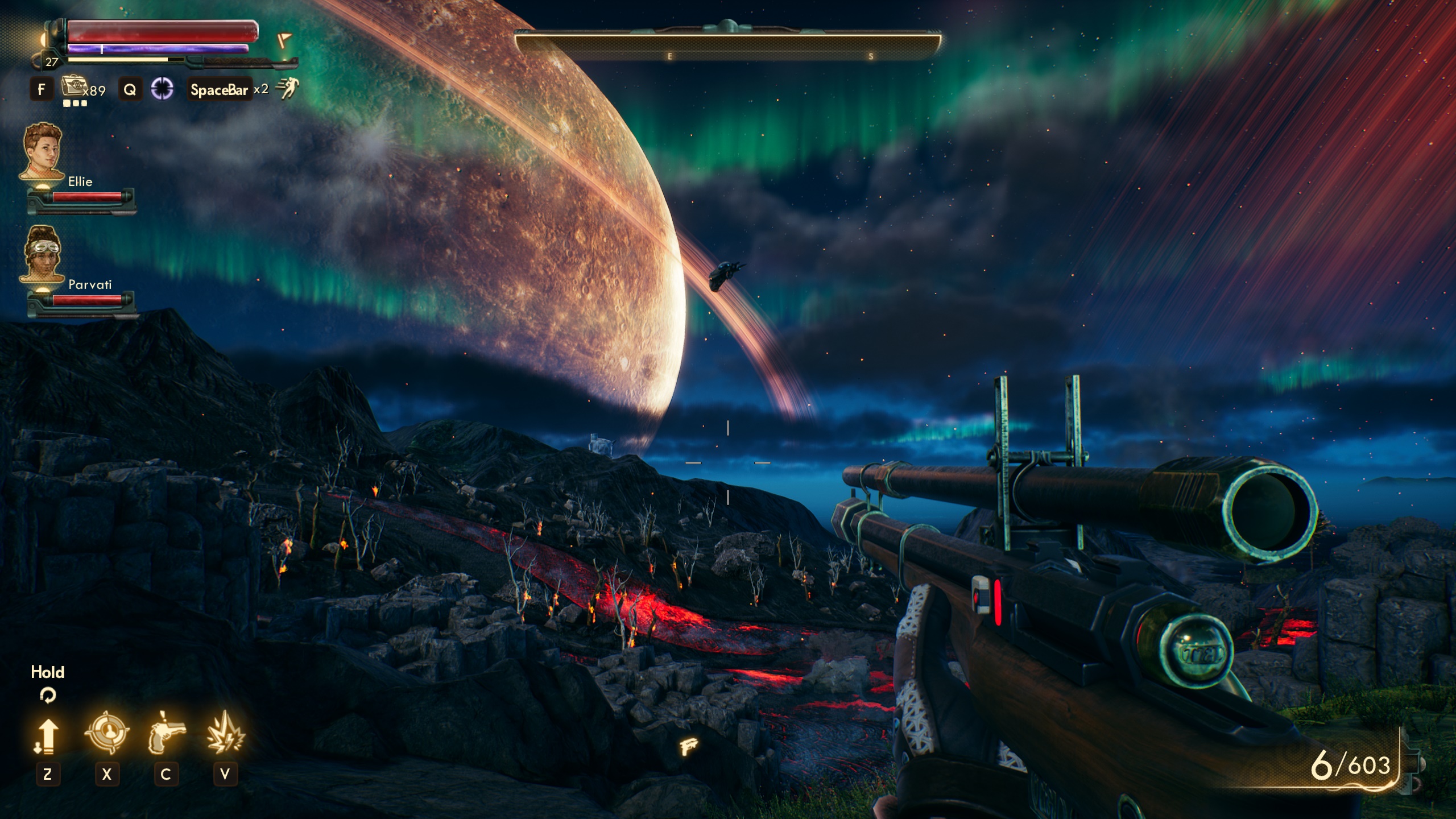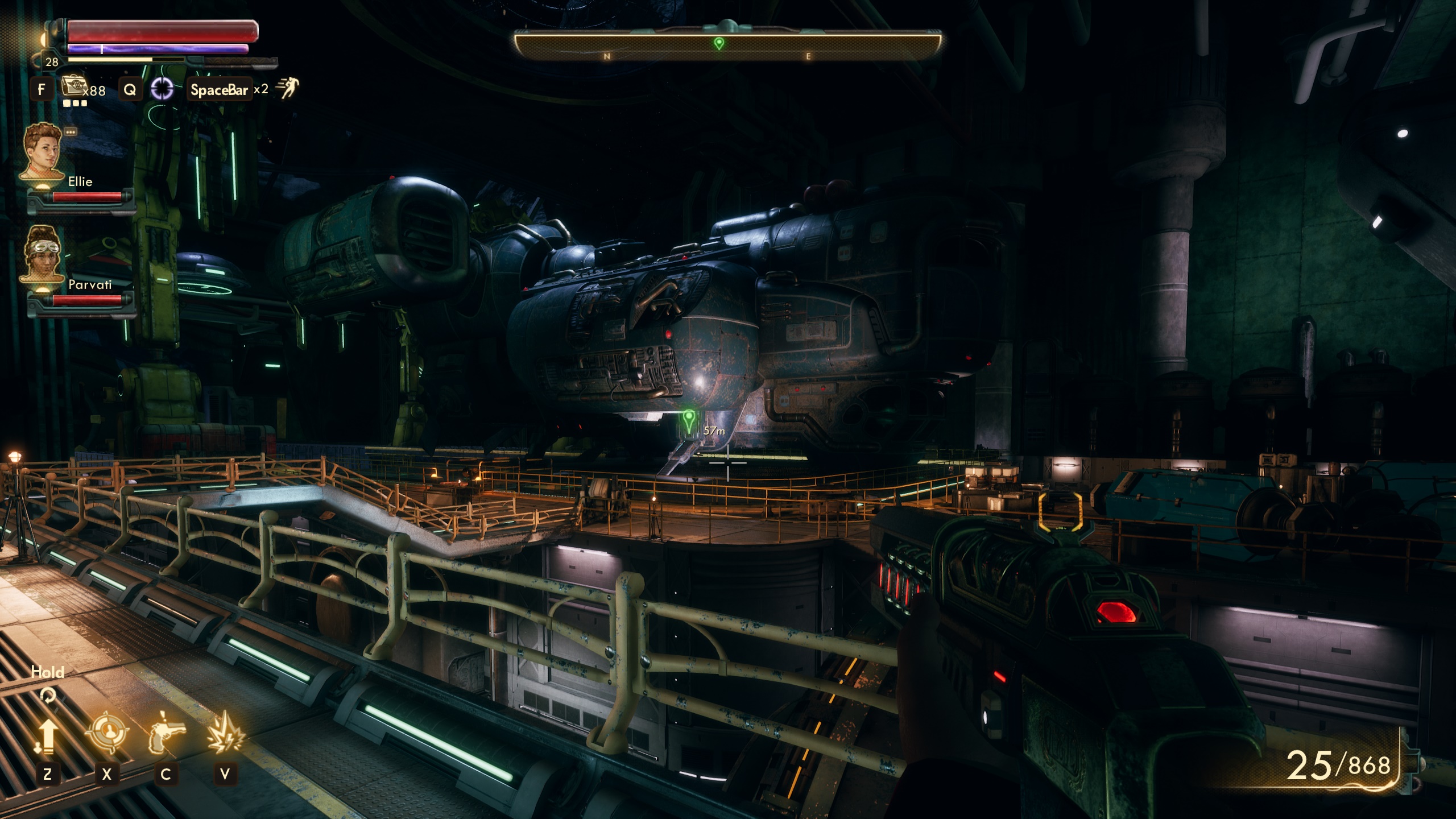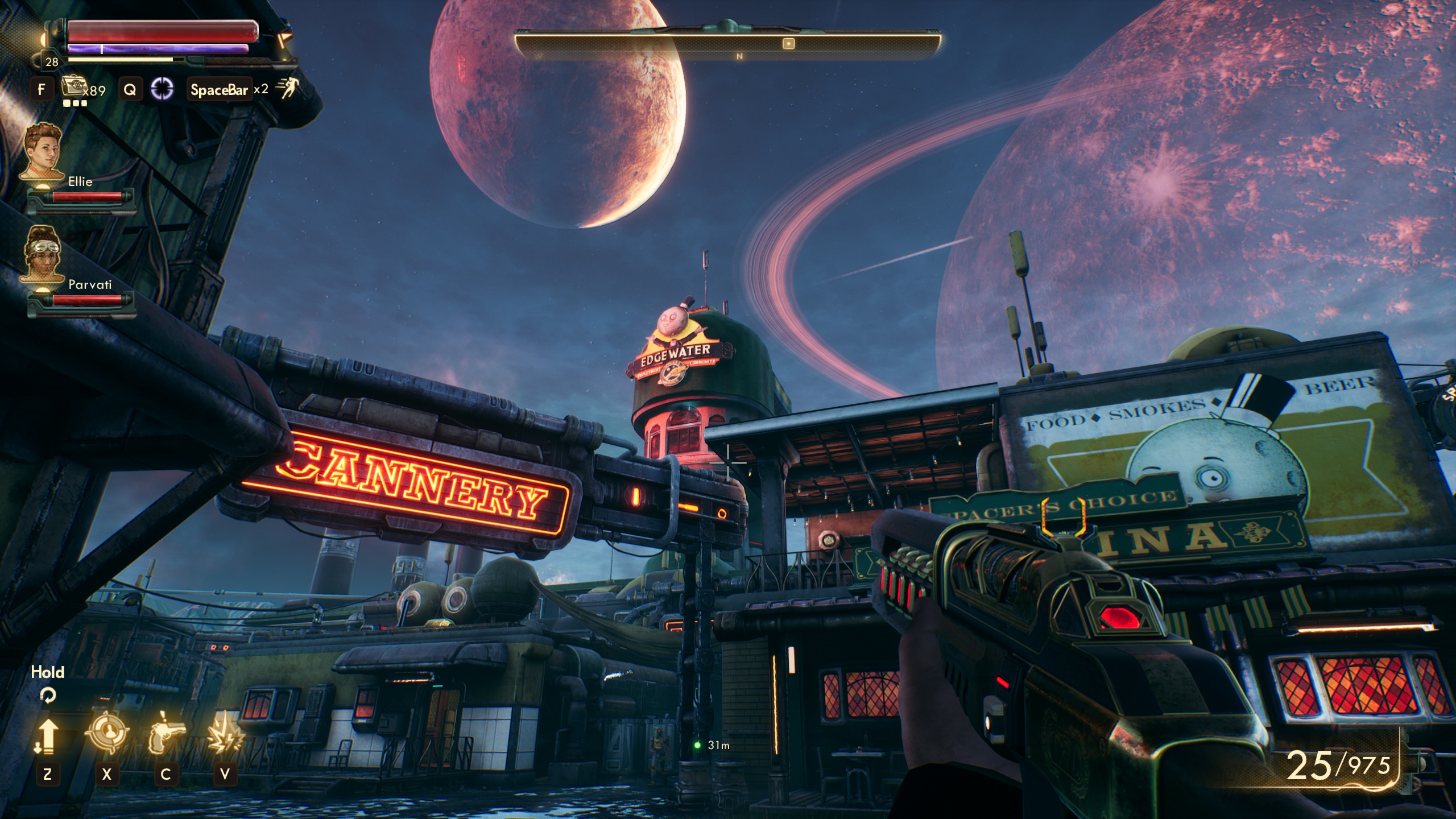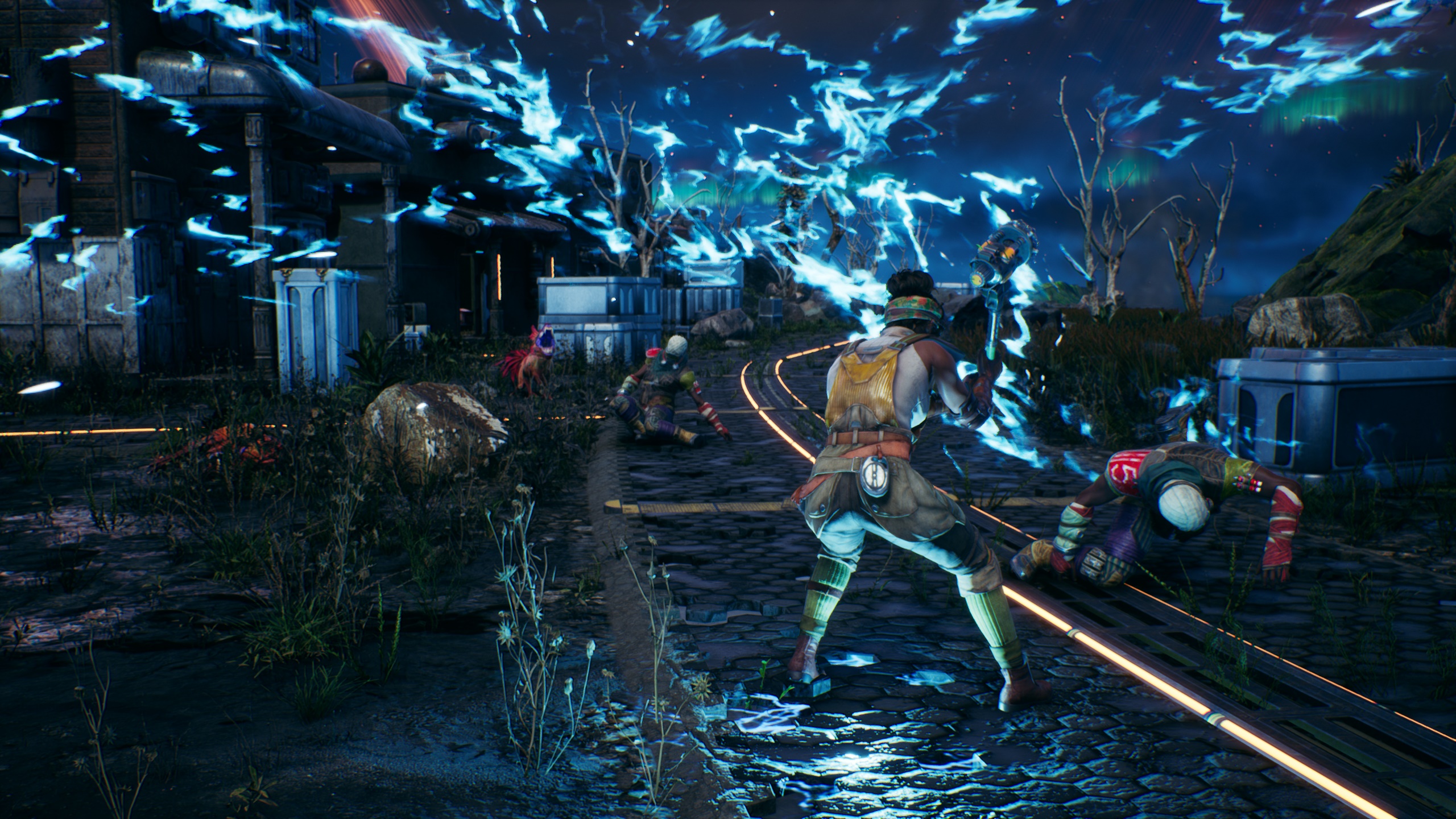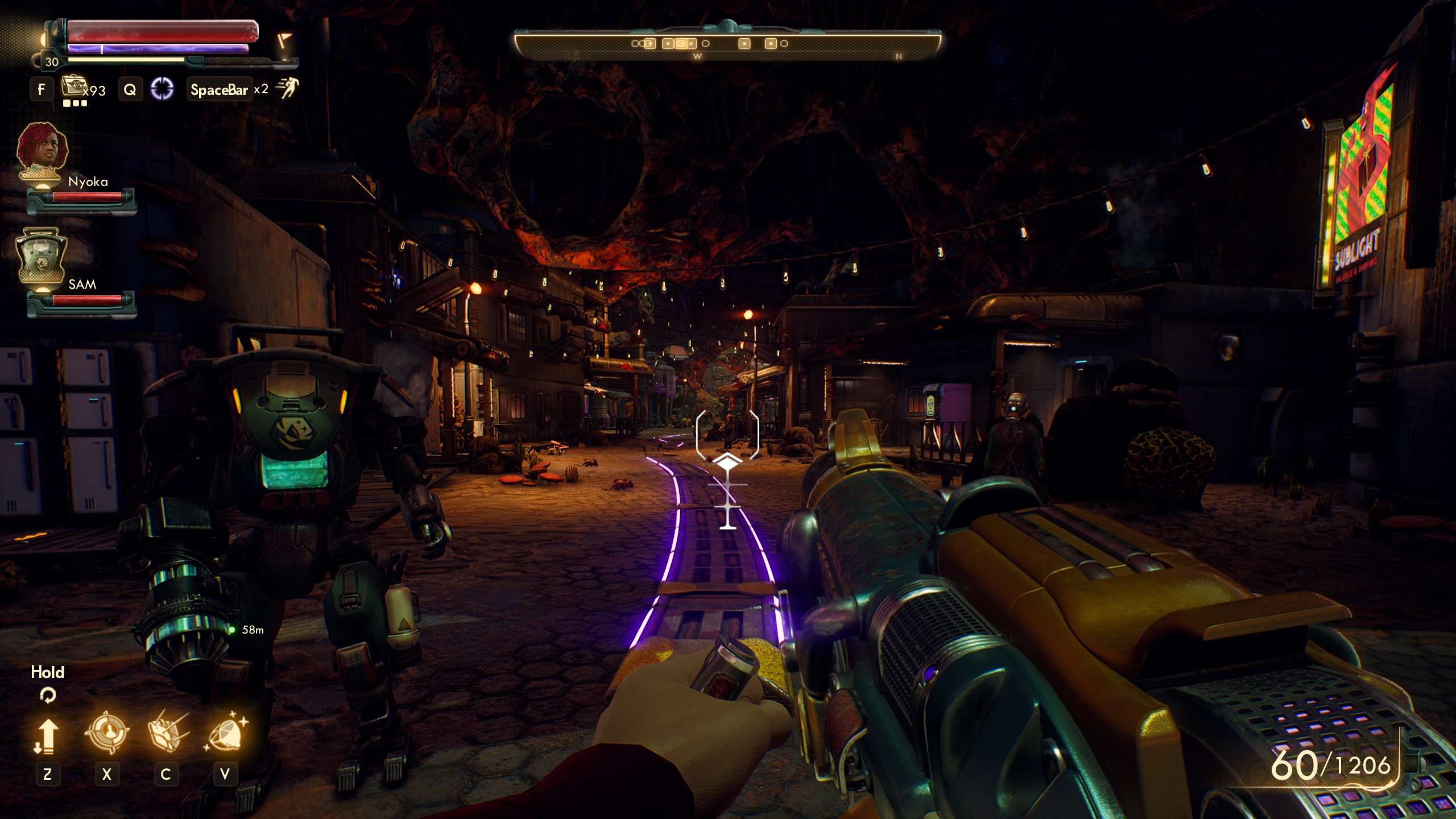The Outer Worlds
Developer: Obsidian Entertainment | Publisher: Private Division | Release Date: 2019 | Genre: Action / Adventure / RPG | Website: Official Website | Purchase: Steam / Windows Store / Epic Games Store
The Outer Worlds opens with your character getting revived from cryosleep and being informed that it is the year 2355. Your ship, the Hope, was supposed to colonize the Halcyon system after a ten-year trip, but never arrived. Instead, only its sister ship the Groundbreaker reached Halcyon safely and its passengers have been trying to carve out an existence for the past 70 years. However, things are not looking so great for your fellow colonists aboard the Hope either. It seems that reviving everyone is not a very big priority for the board, the group of corporations that run Halcyon. In fact, if it wasn’t for the intervention of a renegade scientist by the name of Phineas Welles, you would have been left adrift with everyone else on board the Hope. Welles informs you that he needs you to help revive everyone else on the Hope and so begins your adventure.
The Outer Worlds is a single-player RPG by Obsidian Entertainment, so expectations were rather high for this title. With titles such as Star Wars: Knights of the Old Republic II, Neverwinter Nights 2, and Fallout: New Vegas under their belt, they are no strangers to the RPG genre. It did initially look like The Outer Worlds would simply be Fallout: New Vegas set in space, but despite plenty of similarities between the two titles there’s also more than enough to differentiate them.
One thing that fans will immediately notice is that The Outer Worlds share the same dark humor as the Fallout universe. Immediately after being revived you end up becoming the captain of your own ship after its previous owner comes to a rather unfortunate end. You then go on to discover that the corporations running Halcyon care very little for the colonists and instead uses them as cheap indentured servants. It’s the type of universe where employees are contractually obligated to spout company slogans and productivity, as well as profitability, are way more important than health and safety. Naturally, most players will rile against the injustice of it all and have no qualms assisting Welles with his mission while thumbing their noses at the board. However, if you have a cruel streak running through you, you could also become a turncoat at the first opportunity and sell Welles out to the board for your own gains. Plus, if you really want to cross the line from cutthroat mercenary to cold-blooded killer you could simply murder everyone who crosses your path. The beauty of The Outer World is that its universe will continue no matter what you choose.
Since this is an RPG and an Obsidian one at that you can expect plenty of stats and perks. The skills you choose will determine things like how good you are at shooting with certain weapons or whether you can persuade, deceive or even outright intimidate people into getting what you want. Skills also factor in things like how good you are at hacking computer terminals, sneaking around or healing yourself. Skills are grouped together and initially, it only takes one skill point to increase the stats of everything in the group, but once skills reach level 50 you have to increase them individually. Since you only get ten skill points each time you level up and most players are at level 30 by the time the credits loom you’ll need to choose very careful where you want to spend those points. Luckily, you can respec your character on board your ship and the type of equipment you use as well as the companions you choose for your party can also influence your stats. The perks, on the other hand, are a little bland compared to the outlandish stuff in Fallout, but covers all the basics such as allowing you to carry more, move faster, get better deals from vendors and so on. You only get to pick one perk every second time you level up but can earn additional ones by giving your character flaws. For example, if you keep getting caught by guards in restricted areas you can unlock the “Paranoid” flaw which reduces your personality attributes by one. Other flaws have even bigger penalties, but thankfully they are all optional, so you can ignore them if you want to.
What we really love about The Outer World is that all your attributes and skills actually matter in the game. So, if you push all your points into dialog skills then you are going to be able to easily persuade, lie and intimidate others during dialog, which will allow you to bypass situations that might otherwise have ended up in a fight. The game shows you exactly how many points you would have needed to unlock certain dialog options too. While the board is the most powerful faction in Halcyon, they are by no means the only one. As you journey between the two planets and other points of interest in the system, you’ll encounter plenty of settlements and groups with their own agendas. Some of them will align with your own while other times you might be required to pick sides. The game keeps track of your reputation with each faction, which results in a few interesting scenarios. Also, the moral choices that are asked to make are not always clear cut either and more than once we had to think carefully about who we were going to help and who was going to get the short end of the stick.
Diplomacy will get you very far in The Outer Worlds, but sooner or later you are going to run into someone or something that won’t listen to reason. Usually, it will be a mutated lizard or giant mutated ape, but there are also plenty of outlaws and marauders to exterminate. Thankfully, there’s no shortage of weapons to kill them with either and you can even tinker or mod these weapons at special workbenches to make them more potent. Of course, different weapons have different damage properties, so you are better off using energy weapons on the hostile fauna while saving the electric weapons for the robotic foes. Science weapons are in a class of their own and while tracking them down can be hard, it’s worth it for the effects such as shrinking your enemies or controlling their minds. Another thing we liked about the combat is that each of the allies that you can recruit in the game has their own signature special move that you can activate during combat. These not only look cool but can turn the tide in your favor or at the very least give you a quick breather. New Vegas fans will also appreciate the “Tactical Time Dilation” that allows you to slow down time until the meter is empty. The game explains it away as a side effect of your hibernation sickness, but being able to target enemies with precision is extremely useful.
Obsidian has made use of the Unreal Engine for The Outer Worlds and the result is quite a pretty game. It’s not as vast as other open-world RPGs, but definitely very unique and colorful. We would have liked to see more variety when it comes to enemies, but the game has a very cool space frontier look and feel. Fans of the cult classic Firefly television show will feel right at home with this game. The retro-futuristic design of the game also draws a lot of inspiration from the pulp science fiction genre. The action is viewed from a first-person perspective and every location seemingly has a beautiful skyline that will make you stop and stare. The character models are pretty decent too, but after a while, you’ll begin to notice that too many of them share the same common elements. The interface could also have benefited from some improvements as it can feel a little cumbersome at times. Still, we didn’t encounter any game-breaking bugs in the game despite playing for more than 30 hours.
Obsidian has done a great job with the audio in The Outer Limits as the voice acting standard is very high and all the tunes are sound good. You’ll also hear plenty of corporate jingles from the many vending machines and floating advertisement bots that can be found everywhere. Some of these jingles are perhaps a bit too catchy, but overall the effect is very nice. The dialog in the game is very good and there were plenty of times where we took certain companions with us on missions just to hear what they would have to say to each other or the quest givers that we meet. The Outer World doesn’t feature any romance options for your character, but you do get to help one of your crew members find love, which is neat.
Despite spanning a whole system The Outer World does feel a lot smaller in scope than other open-world RPGs. It has less of a focus on exploration and more on story, which isn’t bad but might be disappointing for some players. There’s still plenty of cool side quests to uncover and complete while the ability to fast travel to any previously visited point of interest is a real time saver. We do recommend playing the game on a higher difficulty level than the default one as after a while you’ll be much more powerful than your opponents, especially with two companions in your party. A special mention should go to the highest difficulty setting where eating, drinking, and sleeping becomes essential components of the game and saving is only possible onboard your ship.
All in all The Outer World is a great single-player RPG experience with lots of dark humor and great dialog. The interface could have been better and the option to track more than one quest at a time would have been helpful, but overall it is a lot of fun. It features plenty of different ways to tackle quests and the ending that chronicles the outcomes for all your choices is also very satisfying. Although it veers very close to Fallout: New Vegas territory, The Outer Worlds is a top-notch RPG that is a must for all fans of Obsidian and everyone who enjoys a good single-player experience.
System Requirements
- OS: Windows 10 version 18362.0 or higher
- Processor: Intel Core i3-3225 or AMD Phenom II X6 1100T
- Memory: 4 GB RAM
- Graphics: Nvidia GTX 650 Ti or AMD HD 7850
- DirectX: Version 9.0
- OS: Windows 10 version 18362.0 or higher
- Processor: Intel Core i7-7700K or Ryzen 5 1600
- Memory: 8 GB RAM
- Graphics: GeForce GTX 1060 6GB or Radeon RX 470


